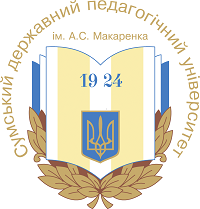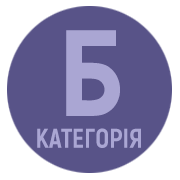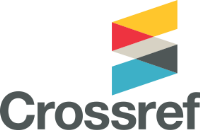THE ROLE OF ETHNOCULTURAL CODES IN CREATING MARKETING TEXTS IN THE HOSPITALITY INDUSTRY: A LINGUISTIC DIMENSION
DOI:
https://doi.org/10.32782/philspu/2025.11.12Keywords:
ethnocultural code, cultural semiotics, multimodality, verbal and visual codes, HoReCa discourse, advertising semiotics, cultural branding, national identity, gastronomic discourse, folklore symbolismAbstract
The article examines the role of ethnocultural codes in shaping marketing texts within the hospitality industry. It is emphasized that the modern hotel and restaurant business (HoReCa), despite complex socio-political conditions, remains highly relevant and continues to develop dynamically, which determines the need for linguistic research into advertising discourse. Marketing texts in hospitality are considered a peripheral type of documentary genres that combines informativeness with a pragmatic impact on the consumer. The study applies cultural, descriptive, stylistic methods and content analysis to identify ethnocultural markers in promotional materials (folklore allusions, historical and religious images, phraseological expressions).It is argued that ethnocultural codes determine the communicative effect of advertising messages: through allusions to folklore, history, religious symbols, and local gastronomic traditions, they provide not only an emotional response but also a sense of cultural belonging and trust. Examples of national imagery in slogans of Ukrainian restaurants and hotels are given: references to Hutsul legends, the Cossack feast, Easter and Christmas motifs, and the stylization of folk proverbs. Such practices are presented as tools to enhance brand recognition, strengthen authenticity, and improve competitiveness.Special attention is devoted to religious symbols, which remain powerful cultural markers in the mass consciousness. Their use in restaurant business advertising creates an atmosphere of spiritual elevation and family unity. The article also analyzes phraseological units as a means of expressiveness and a carrier of cultural memory that enhances the memorability of slogans. The author underlines that the effectiveness of marketing texts depends on their ability to activate familiar cultural images while maintaining clarity and ease of decoding.The conclusion highlights that modern marketing discourse in HoReCa is ethnoculturally marked, combining economic objectives with the representation of national identity. Promising areas for further research include a comparative analysis of cultural codes in international marketing, the interaction of visual and verbal components, and the evaluation of ethnocultural markers in real-life practice.
References
Tresidder R.. The marketing language of hospitality: A semiotic approach. International Journal of the Humanities. 2010. № 3(1). URL: https://doi.org/10.5176/2010-4804_3.1.292/ (дата звернення: 08.08.2025)
Черемних І. В. Промоція як засіб просування маркетингових комунікацій. Комплекс «маркетинг-мікс». Нау- кові записки Інституту журналістики. 2013. № 50. С. 69–73.
Примак Т. О., Павленко А.Ф, Войчак А.В. Маркетингові комунікації: сучасна теорія і практика. К.: КНЕУ, 2005. 408 с.
Орлова О. В., Орлов О. П. Основи літературознавства. Тексти лекцій: навч.-метод. посіб. для підготовки здобувачів освітнього ступеня «бакалавр» галузь знань 01 Освіта / Педагогіка за спеціальністю 014 Середня освіта «Мова і література (англійська/німецька). Полтава: Сімон, 2020. URL: http://dspace.pnpu.edu.ua/bit-stream/123456789/14564/3/Основи%20літ%20лекції.pdf/ (дата звернення: 12.08.2025)
Benveniste É. Problèmes de linguistique générale. Tome II. Paris: Gallimard, 1974. URL: https://doi.org/10.7202/500389AR/ (дата звернення: 10.08.2025)
Nilsson T. How marketers argue for business – Exploring the rhetorical nature of industrial marketing work. Industrial Marketing Management. 2017. № 65. Р. 54–65. URL: https://www.sciencedirect.com/science/article/abs/pii/ S001985011730785X (дата звернення: 08.08.2025)
Miles C., Nilsson T. Marketing (as) rhetoric: An introduction. Journal of Marketing Management. 2022. URL: https://www.jmmnews.com/marketing-rhetoric (дата звернення: 09.08.2025)
Бутенко Н. Ю. Соціальна психологія в рекламі: навч. посібник. Київ: КНЕУ, 2006. URL: https://fpk.in.ua/images/biblioteka/4bac_finan/Butenko-sots.-psykholohiya-v-reklami.pdf (дата звернення: 11.08.2025)
Lotman Yuri M. Universe of the Mind: A Semiotic Theory of Culture. Translated by Ann Shukman. Introduction by Umberto Eco. London: I.B. Tauris. 1990 URL: https://monoskop.org/images/5/5e/Lotman_Yuri_M_Universe_of_the_Mind_A_Semiotic_Theory_of_Culture_1990.pdf (дата звернення: 01.10. 2025)
Barthes R. Mythologies. Paris: Seuil. 1957. URL: https://monoskop.org/images/9/9b/Barthes_Roland_ Mythologies_1957.pdf (дата звернення: 02.10. 2025)
Peirce C. S. Collected Papers of Charles Sanders Peirce (Vols. 1–8). Cambridge: Harvard University Press. 1931–1958. URL: https://sites.ualberta.ca/~michaelf/M665/sources/Pages%20from%20Charles%20Sanders%20Peirce,%20Charles%20Hartshorne,%20Paul%20Weiss,%20Arthur%20W.%20Burks%20Collected%20Papers%20of%20Charles%20Sanders%20Peirce%20%201994-2.pdf (дата звернення: 01.10. 2025)
Літкович Ю. В. Вербальні та візуальні алюзії в англомовній рекламі. Академічні студії. Серія «Гуманітарні науки». 2024. № 2. С. 24–29. URL: https://doi.org/10.52726/as.humanities/2024.2.4 (дата звернення: 10.08.2025)
Рожанська В. О., Болотнікова К. В. Функціонування фразеологічних одиниць у сучасній рекламі. Обрії друкарства. 2015. № 1. С. 144–149. URL: http://nbuv.gov.ua/UJRN/obdr_2015_1_20 (дата звернення: 11.08.2025)
Босенко О. В., Чуланова Г. В. Використання фольклорних елементів як засобу сугестії у рекламних слоганах. Львівський філологічний часопис. 2021. № 10. С. 11–18. URL: http://nbuv.gov.ua/UJRN/lvphj_2021_10_4 (дата звернення: 12.08.2025)








